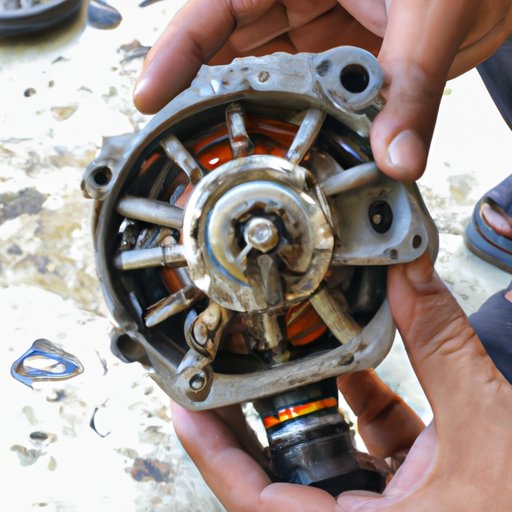Introduction
Having trouble starting your car? A faulty starter could be the culprit. When your car won’t start, it can be frustrating and inconvenient. But don’t worry – this article will help you diagnose and repair the issue with your starter so you can get back behind the wheel.
Utilize a Repair Manual
The first step in fixing a car starter is to obtain the exact steps needed to repair the starter. The best way to do this is by using a repair manual for the make and model of your car. The manual should provide detailed instructions for diagnosing and repairing your car’s starter.
Identify the Problem
Once you have the repair manual, the next step is to diagnose the issue with the starter. Some common signs that the starter is malfunctioning include clicking sounds when you turn the key, grinding noises coming from the engine, or no response when you turn the key. If you’re experiencing any of these symptoms, then you likely have an issue with the starter.
Check the Connections
The next step is to check the electrical connections. Make sure all the wires are securely connected, and check for any signs of corrosion. Corrosion can cause poor electrical connections, which can lead to issues with the starter. If you find any corroded connections, clean them up with some baking soda and water.
Inspect the Starter Motor
If the connections are good, then the next step is to inspect the starter motor. Look for signs of wear and tear, such as worn brushes or damaged windings. If you find any damage, then you may need to replace the starter motor.
Replace the Starter Solenoid
The starter solenoid is responsible for engaging the starter motor. If the solenoid is faulty, then it won’t activate the starter motor. To determine if the solenoid needs to be replaced, you can use a multimeter to test the voltage output. If the voltage is low, then you’ll need to replace the solenoid.
Test the Battery
Another possible cause of starter problems is a weak battery. To test the battery, you can use a voltmeter to measure the voltage. The battery should be at least 12 volts. If the battery is weak, then you’ll need to replace it.
Have a Professional Check It Out
If you’ve gone through all these steps and you’re still having trouble starting your car, then it’s time to take it to a mechanic. A professional can diagnose the issue and recommend the best course of action.
Conclusion
Diagnosing and repairing a car starter isn’t always easy, but with the right tools and information, it can be done. By utilizing a repair manual, identifying the problem, checking the connections, inspecting the starter motor, replacing the starter solenoid, testing the battery, and having a professional check it out, you can get your car back on the road in no time.
(Note: Is this article not meeting your expectations? Do you have knowledge or insights to share? Unlock new opportunities and expand your reach by joining our authors team. Click Registration to join us and share your expertise with our readers.)
